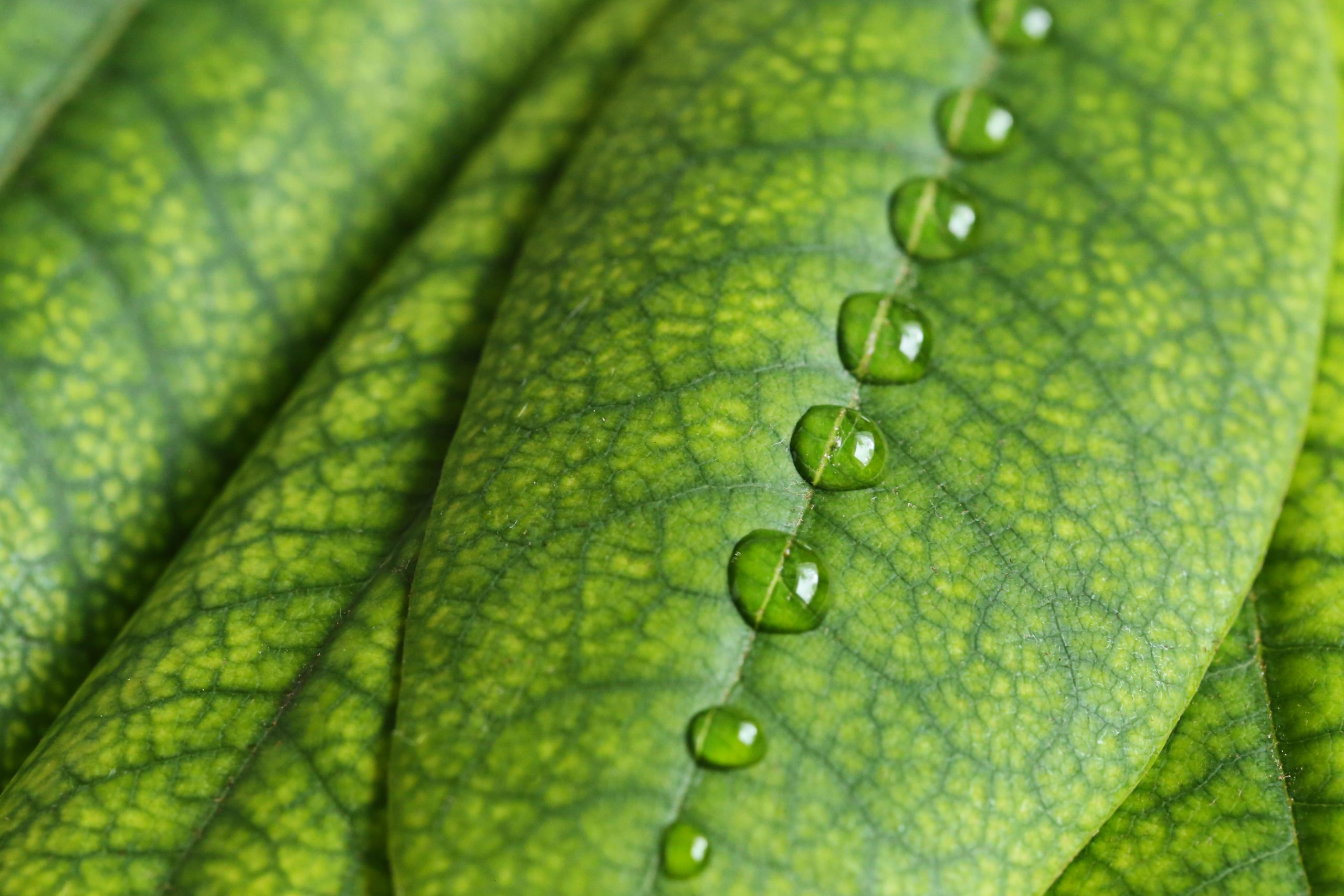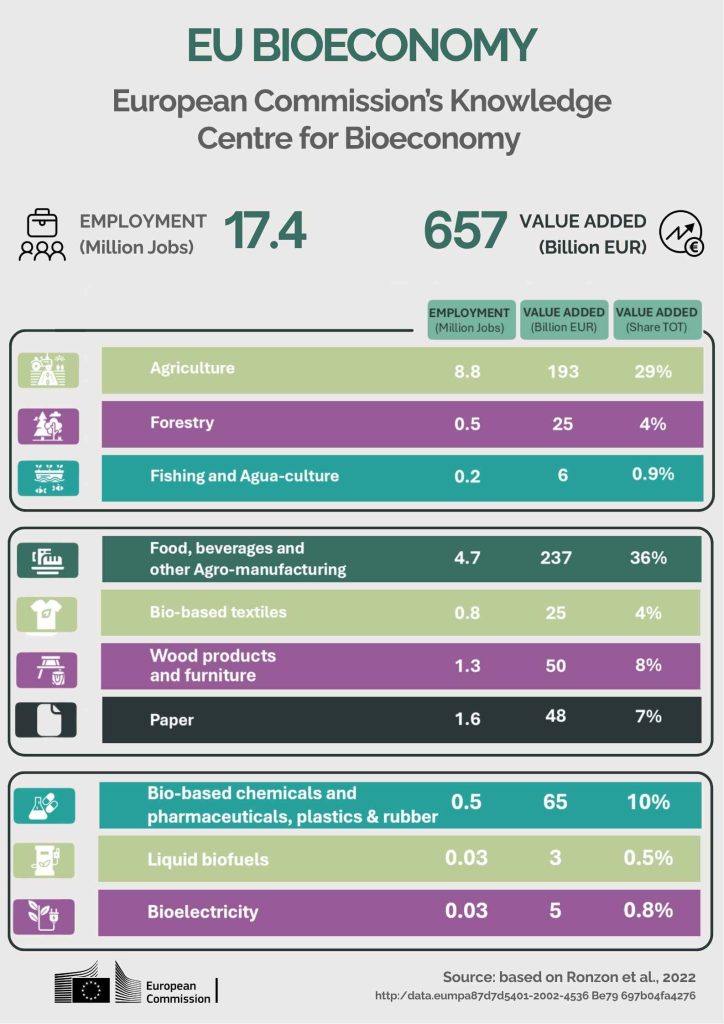
Prefer to Listen? Press Play Below
For your convenience, this blogpost is also available as an audio version. Simply click the play button to listen (Duration: 9 minutes 50 seconds)
Author: Damianos Michailidis | Project Manager at Rainno
In recent years, bio-based products have become a significantly bigger part of your everyday life, and maybe without you even realising it. From your bag or shoes that might be made with bio-leather from grape skin, to your energy supplements, vitamins and cosmetics made using all kinds of agricultural by-products as raw materials. Look at the labels of various products in a supermarket and you will find a slew of claims about how they are produced using bio-materials, to the product itself but also to its packaging.
You might think that this is good (and in most cases it is!), but you might not know what this actually means, what it implies, and if you should pay the 10%-20% premium1 that this product asks from you. The purpose of this article is to introduce you to the world of bio-products, showcase their potential benefits and provide you with the necessary context to make purchase decisions yourself.
What are bio-based products?
Very simply put, bio-based products are wholly or partly derived from materials of biological origin (such as plants, animals, enzymes, and microorganisms, including bacteria, fungi and yeast), excluding materials embedded in geological formations and/or fossilised. During the last 10 to 15 years there has been continuously increased interest in products made from bio-based materials, due to a series of benefits in relation to their renewable resource base and perceived environmental friendliness. Indeed, bio-based materials have the potential to reduce greenhouse gas (GHG) emissions by up to 𝟰𝟱% compared to fossil-based ones2.
Due to the continuously increasing demand for such products, the bio-based economy (or bioeconomy) has grown to a prominent and significant sector in the EU, with 8.3% of its employment and 4.7% of its GDP coming from sectors and systems that rely on biological resources. According to the EU, the bioeconomy “includes and interlinks: land and marine ecosystems and the services they provide; all primary production sectors that use and produce biological resources3 (agriculture, forestry, fisheries and aquaculture); and all economic and industrial sectors that use biological resources and processes to produce food, feed, bio-based products, energy and services”.
Examples of bio-based products include bio-based chemicals that are used in various industries, such as cosmetics, paints, lubricants and adhesives, enzymes that are used to produce chemical building blocks, detergents, pulp and paper, textiles and other products, insulation materials used in construction that can be made from agricultural waste and fungi, alternative energy sources like biomethane, and many more. For a more extensive list of bio-products and their application you can read here.
Why should you care?
Some people may think a lot about the materials in the products they are buying and consuming but many more don’t. So here’s the deal, bio-based materials matter and they are probably going to matter even more as we move forward. The main reasons that this will be the case comes down to the following:

- they can help us reduce GHG emissions especially in energy intensity areas: nearly 30% of environmental and climate pressures stem from five key sectors, notably construction, food, and transport, where bio-based alternatives offer sustainable options, supporting defossilisation. This means that they can also help us in;
- they reduce our dependence to fossil fuels: since by-products are often pitched and used as alternatives to petroleum-based materials and energy sources with renewable alternatives derived from biomass;
- they help local communities develop and grow: since many bio-materials are derived from bio-mass that comes locally from farmers, providing them with additional revenue streams. As we already discussed, bioeconomy is a significant employer in the EU (Figure 1), creating new jobs in many sectors like agriculture, forestry and aquaculture;
- consumers, and especially younger generations are becoming more and more environmentally conscious: according to Harvard Business Review, when Gen Z and Millennial customers believe that a brand cares about its impact on people and the planet, they are 27% more likely to purchase it than older generations4. Additionally, PwC’s global consumer survey suggests that on average consumers are willing to pay 9.7% sustainability premium5, even as the cost-of-living is rising. Soon, these younger generations will have most of the purchasing power.
But are bio-based products always sustainable?
Excellent question! As we briefly touched on, yes, in most cases bio-based products are more sustainable than their fossil-based counterparts. Remember the study we mentioned earlier about bio-products emitting up to 45% less GHG during their life cycle? In that study researchers examined the environmental trade-offs of 98 different products and found that 80 out of the 98 bio-products had lower GHG footprint than their fossil alternatives. For the end product to be sustainable it mainly depends on:
- How the biomass used to make the materials is grown/produced?
- What specific process is used to convert the biomass into bio-material (energy sources, chemical inputs etc.)?
- Whether or not the product it’s truly biodegradable or recyclable at the end of its life. Because, contrary to what someone might intuitively think, not all bio-products are.
Something else we should mention here is the role of new technologies. New technological innovations and processes are constantly being introduced and allow for more efficient conversion of bio-mass into materials and better end products. Additionally, technologies like AI and Blockchain can help in the traceability of bio-products, leading to more transparent supply chains, responsible sourcing, and assessing a products’ real environmental impacts, helping us make better decisions. Overall, new technologies can support decision-makers to track materials, optimise logistics, and reduce risks across the supply chain.
So what can you do?
By choosing products that are made and/or packaged using bio-materials, and disposing them through the proper routes you are already helping. Despite that, it is possible to fall victim to “greenwashing” traps, from products that have generalised positive claims around their environmental benefits. To avoid this, experts and consumer protection agencies suggest that you look for eco-labels. ‘Green stickers’ are certification systems used for food and consumer products, particularly in regions such as the European Union, where the EU Ecolabel of environmental excellence has been in use since the early 90s (some examples in Figure 2).
You should also be wary of claims you do not fully understand. For example If you choose a product based on its claiming to be of 100% ‘green origin’, you may want to investigate further, particularly when it comes to cosmetics and personal hygiene products. Finally, one of the simpler things that companies do to make consumers think that a product is “clean” and “natural”, is to use green colours in its design and imagery (marketing green packaging, images of natural landscapes etc.), reassuring consumers that buying this product is somehow saving the planet. Again, it is advised to look past that and investigate a seller’s or manufacturer’s real ecological credentials.

Final thoughts
Despite the enhanced recognition enjoyed by bio-based products and their potential benefits, numerous challenges in their production, assessment, and utilisation still stay on the way of their full development and general adoption. Increased positive public perception and new technologies are helping us to make positive steps towards their wider adoption. We still have a great way to go but both producers and consumers have a stake in building a more resilient and sustainable economy. Finally, when it comes to our everyday decisions, most of the time, just by choosing a bio-based product, in comparison to its fossil-based alternative, will result in a net benefit for the environment.
Want to know more about the bioeconomy and how new technology is shaping the future of bio-based products? In the near future the ARGONAUT project will publish more articles like this one in the topics of bio-economy, bio-based products, AI and blockchain, so if you want you can subscribe to our Newsletter to stay up to date.
You can also learn more about the project and the innovative JASON AI-powered tool that we are developing here.
Footnotes
[1] Carus, M., Partanen, A., & Dammer, L. (2018). Detailed evaluation of green premium prices for bio-based products along the value chain. Nova Institute for Energy and Innovation.
[2] Zuiderveen, E. A., Kuipers, K. J., Caldeira, C., Hanssen, S. V., Van Der Hulst, M. K., De Jonge, M. M., … & Huijbregts, M. A. (2023). The potential of emerging bio-based products to reduce environmental impacts Nature Communications, 14(1), 8521.
[3] European Commission (2024). European Bioeconomy
[4] Harvard Business Review (2023). Research: Consumers’ Sustainability Demands Are Rising
[5] PwC (2024). PwC 2024 Voice of the Consumer Survey
Frequently Asked Questions
What is the ecological footprint of a product?
The Product Environmental Footprint (PEF) and the Organisation Environmental Footprint (OEF) are life cycle assessment (LCA) based methods to measure and communicate the potential life cycle environmental impact of products (goods or services) and organisations, respectively. Find out more about product’s ecological footprint.
How does bioeconomy affect the environment?
Through reuse, repair and recycling, the total amount of waste and its impact is reduced. It also saves energy, minimises pollution of soil, air and water, thus helping to prevent damage to the environment, climate and biodiversity. Find out more about bioeconomy & environment.
What is the EU product environmental footprint methodology?
PEF methodology is designed to assist companies measure the environmental performance of their products and position themselves in the market of sustainable products in the EU Single Market. Find out more about footprint methodology.
What products have a high carbon footprint?
Consumption General:
- 1 plastic bag: 33g
- 1 disposable coffee cup: 16g CO2
- 1 Google search: 0.2g CO2
- 1 plastic water bottle: 83g CO2
- Mobile phone use (1hr): 172g CO2
- 1 roll 2 ply: 1,300g / 1.3kg CO2
- Flowers (imported): 32,000g / 32kg CO2
- Flowers (local): 2,500g / 2.5kg CO2
- A price tag (on clothes): 187g CO2
Find out more about products carbon footprint





